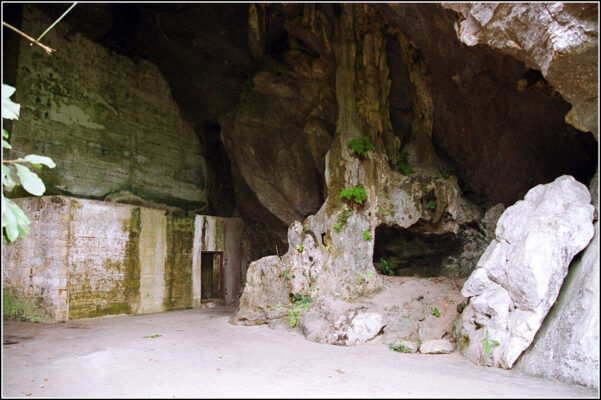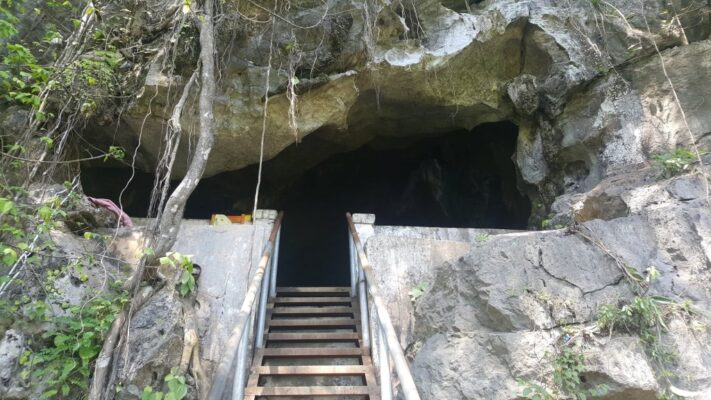Uncover the Mysterious Hospital Cave on Cat Ba Island – Vietnam’s Best-Kept Historical Wonder
While many travelers to Vietnam are familiar with the famous Cu Chi and Vinh Moc tunnels, Hospital Cave remains one of northern Vietnam’s most fascinating yet overlooked historical treasures. Nestled within the limestone karsts of Cat Ba Island, this remarkable underground complex served as a secret bomb-proof hospital and safe haven during the American War. Today, it stands as a powerful testament to Vietnamese resilience and ingenuity.

What Is Hospital Cave?
Hospital Cave (locally known as Quan Y Cave or Army Hospital Cave) is a three-story underground complex carved into the limestone mountains of Cat Ba Island. Located approximately 13km from Cat Ba Town in the Cat Hai district, this hidden wonder served dual purposes as both a fully-functioning military hospital and a bomb shelter during the American War from 1963-1975.
Unlike typical natural caverns, Hospital Cave was strategically engineered with concrete reinforcements, creating a self-contained medical facility capable of treating hundreds of patients while providing protection from aerial bombardments. Its remarkable design and historical significance make it an essential stop on any Cat Ba Island itinerary.

The Fascinating History of Hospital Cave
The cave’s history dates back to the Tran dynasty when General Hung Son discovered it during the historic Bach Dang River battle. However, its most significant historical period came during the Vietnam War (or American War, as it’s known locally).
From 1963 to 1965, as American forces intensified bombing campaigns across Northern Vietnam, military engineers transformed this natural formation into a sophisticated underground hospital. The facility served multiple critical functions:
- Treating injured and sick Vietnamese soldiers
- Providing shelter for local residents from Cat Ba and nearby Bach Long Vy Island
- Housing military staff and medical personnel
- Serving as a strategic meeting location for military officials
The hospital remained operational until 1975 when the war ended. For decades afterward, it lay largely forgotten until being rediscovered as a valuable historical site. Today, the cave has been preserved in its original state, allowing visitors to step back in time and experience this remarkable chapter of Vietnamese history.
Inside Hospital Cave: A Remarkable Underground Complex
What makes Hospital Cave truly extraordinary is its sophisticated design and remarkably preserved state. The complex consists of:
- Two connected caves spanning approximately 200 meters each
- Three separate floors containing 17 functional rooms
- Main entrances facing east and west for strategic access and escape
- Narrow staircases designed to impede enemy advancement
- Heavy iron doors reinforced with stalactites for additional protection
Floor-by-Floor Exploration
First Floor
The primary operational level contains 14 specialized rooms including:
- Operating theaters with original equipment
- Patient waiting areas
- Medicinal storage and preparation rooms
- Recovery wards
Second Floor
This level served both medical and morale-boosting functions with:
- Physical examination areas
- A movie theater where documentaries and films were shown to boost soldier morale
- Additional patient treatment rooms
Third Floor
The administrative hub of the complex featuring:
- Welcome hall and reception area
- Guard stations for security
- Quarters for medical staff and military officers
- Strategic planning rooms
What’s particularly impressive is the clever defensive design. The narrow connecting passages between floors made enemy infiltration extremely difficult, while the reinforced iron doors at the cave’s rear provided additional protection against assault.
Visiting Hospital Cave in 2025: Essential Information
Opening Hours and Fees
- Open: Daily from 8:00 AM to 5:00 PM
- Entrance Fee: 40,000 VND per person (approximately $1.60 USD)
- Guided Tour: Available in English for an additional 50,000 VND
Best Time to Visit
The cave maintains a consistent temperature year-round, making it accessible in any season. However, the best months to visit Cat Ba Island generally are:
- April to June: Pleasant temperatures with fewer tourists
- September to November: Excellent weather and smaller crowds
Avoid the summer peak season (July-August) when Vietnamese domestic tourism is at its highest.
What to Bring
- Comfortable walking shoes with good traction
- Light jacket (the cave interior remains cool)
- Small flashlight or phone with flashlight capability
- Camera (photography is permitted throughout)
- Water bottle
How to Reach Hospital Cave
From Hanoi
Option 1: Join a Luxury Cruise Tour (Recommended)
The most comfortable and enjoyable way to experience Hospital Cave is by booking a premium cruise that includes Cat Ba Island and Hospital Cave in its itinerary. We recommend:
- 3-Day 5-Star Lan Ha Bay and Halong Bay Cruise – Our most comprehensive tour including Hospital Cave exploration
- Halong & Lan Ha Bay 5-Star Cruise – Premium experience with Hospital Cave visit included
These cruises provide seamless transportation, expert guides, and the opportunity to experience the magnificent limestone karsts of Halong and Lan Ha Bay alongside your Hospital Cave visit.
Option 2: Independent Travel
If traveling independently from Hanoi:
- Take a bus to Hai Phong city (2-3 hours)
- From Hai Phong, catch a speedboat or ferry to Cat Ba Island (45 minutes)
- Once on Cat Ba, arrange transportation to the cave
From Cat Ba Town
Motorbike
- Rental Cost: From 150,000 VND per day ($6 USD)
- Travel Time: Approximately 20 minutes
- Route: Follow the main road north out of town toward Gia Luan Port
Taxi
- Cost: Around 180,000 VND one-way ($7 USD)
- Travel Time: 15-20 minutes
- Convenience: Easily arranged through your accommodation
Shuttle Bus
- Cost: 80,000 VND round trip ($3 USD)
- Schedule: Regular departures from Cat Ba Town to Gia Luan dock
- Note: Check current timetables with your accommodation
Why Hospital Cave Deserves Your Visit
Hospital Cave offers more than just historical significance—it provides a deeply moving glimpse into the realities faced by Vietnamese people during wartime. Walking through these underground chambers helps visitors appreciate:
- The extraordinary engineering accomplishments achieved with limited resources
- The resilience and determination of the Vietnamese people
- The medical innovations implemented under extreme conditions
- The human cost of conflict and the lengths people go to for survival
Unlike more commercialized war attractions, Hospital Cave remains authentic and less crowded, offering a more contemplative and educational experience.
Experience Hospital Cave with Ha Long Bay Lux Cruises
For the ultimate Hospital Cave experience, we recommend combining your visit with a luxury cruise through the spectacular limestone landscapes of Halong Bay and Lan Ha Bay. Our premium cruise packages include:
- Expert English-speaking guides who provide detailed historical context
- Comfortable transportation to and from Hospital Cave
- Small group sizes for a more personalized experience
- Additional activities on Cat Ba Island
- Luxury accommodation and dining on board our 5-star vessels
Don’t just take our word for it—see what other travelers say about our tours on TripAdvisor.
Contact Us to Book Your Hospital Cave Adventure
Ready to explore this remarkable historical site? Contact Ha Long Bay Lux Cruises to customize your perfect Northern Vietnam adventure:
- Hotline | WhatsApp: +84.978.358.422
- Phone | WhatsApp: +84.962.261.687
- Email: halongbayluxcruises@gmail.com or vietnammarveltravel@gmail.com
- Website: halongbayluxcruises.com
FAQs About Hospital Cave
How long does it take to explore Hospital Cave?
Most visitors spend between 45 minutes to 1.5 hours exploring the cave, depending on whether you take a guided tour and how interested you are in the historical details.
Is Hospital Cave suitable for children?
Yes, the cave is accessible for children, though parents should supervise them closely. The historical context may be better appreciated by older children and teenagers.
Are there any physical requirements for visiting?
The cave requires some stair climbing and walking on uneven surfaces. Visitors with limited mobility may find some areas challenging but can still access the main level.














